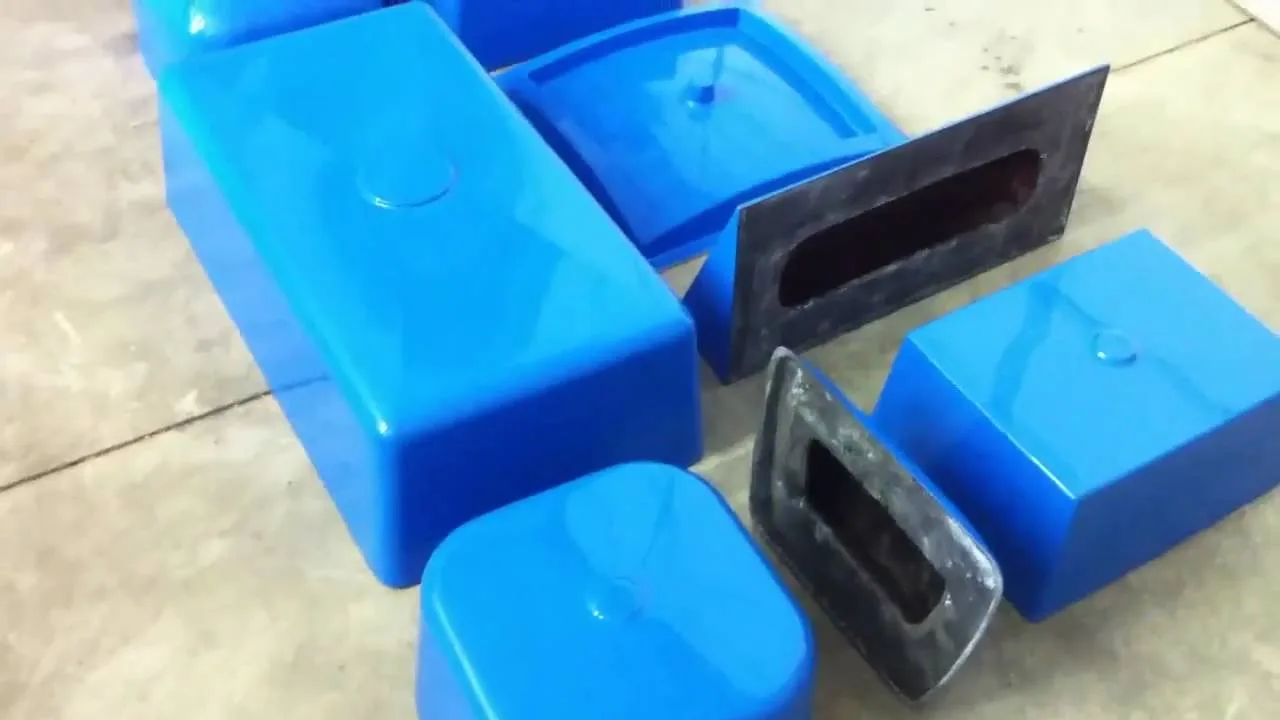Introduction
Fiberglass concrete molds have revolutionized the way we approach concrete projects, offering unmatched versatility and durability. These molds, made from a combination of fine glass fibers and resin, provide a flexible and robust solution for creating intricate concrete designs. Whether you are a professional contractor or a DIY enthusiast, understanding the advantages and uses of fiberglass concrete molds can significantly enhance your projects. In this comprehensive guide, we will explore the benefits of using fiberglass molds, walk you through the process of making them, and highlight their various applications.

fiberglass concrete molds
What are Fiberglass Concrete Molds?
Fiberglass concrete molds are specialized forms made from a mixture of fine glass fibers and resin, designed to shape and hold concrete until it hardens into the desired form. These molds stand out due to their exceptional strength and flexibility, making them ideal for creating detailed and intricate concrete designs. Compared to traditional wooden or metal molds, fiberglass molds offer superior durability and a longer lifespan, making them a cost-effective choice for both large-scale commercial projects and smaller DIY endeavors.
Fiberglass molds are not only strong but also lightweight, allowing for easier handling and reduced labor costs. Their flexibility enables the creation of complex shapes that might be challenging or impossible with other materials. This adaptability makes fiberglass concrete molds a popular choice among artists, contractors, and hobbyists alike.
Benefits of Using Fiberglass Concrete Molds
One of the primary benefits of fiberglass concrete molds is their durability. The combination of glass fibers and resin creates a mold that can withstand repeated use without losing its shape or integrity. This makes them an excellent investment for those who frequently work with concrete. Additionally, the strength of fiberglass molds allows for the creation of large or heavy concrete structures without the risk of the mold breaking or deforming.
Another significant advantage is the flexibility in design. Fiberglass molds can be custom-made to fit any shape or size, providing unparalleled creative freedom. This flexibility is particularly beneficial for projects requiring unique or intricate designs, such as decorative panels, garden ornaments, and architectural elements.
Cost-effectiveness is another key benefit. Although the initial cost of fiberglass molds may be higher than other materials, their longevity and reusability make them a more economical choice in the long run. They require less maintenance and can be used repeatedly, reducing the need for frequent replacements.
How to Make Fiberglass Concrete Molds
Creating your own fiberglass concrete molds can be a rewarding and cost-saving endeavor. Here’s a step-by-step guide to help you get started:
- Gather Materials and Tools: You will need fiberglass cloth, resin, a mold release agent, brushes, and protective gear (gloves, mask, and goggles).
- Prepare the Master Model: The master model is the shape you want to replicate. It can be made of wood, clay, or any other material. Ensure it is smooth and free from defects.
- Apply Mold Release Agent: Coat the master model with a mold release agent to prevent the fiberglass from sticking to it.
- Lay Fiberglass Cloth: Cut the fiberglass cloth into manageable pieces and lay them over the master model.
- Apply Resin: Mix the resin according to the manufacturer’s instructions and apply it over the fiberglass cloth using a brush. Ensure the cloth is fully saturated with resin.
- Layering: Apply multiple layers of fiberglass cloth and resin, allowing each layer to cure before adding the next. This builds up the strength and thickness of the mold.
- Curing: Allow the mold to cure completely. This may take several hours to a few days, depending on the resin used.
- Demolding: Once cured, carefully remove the fiberglass mold from the master model.
- Finishing Touches: Trim any excess material and smooth out rough edges. Your fiberglass concrete mold is now ready for use.
Safety Tips: Always work in a well-ventilated area and wear appropriate protective gear when handling resin and fiberglass materials.
Applications of Fiberglass Concrete Molds
Fiberglass concrete molds are used in a wide range of applications, from construction to decorative arts. In the construction industry, they are commonly used to create architectural elements such as columns, facades, and decorative panels. Their durability and ability to replicate fine details make them ideal for producing consistent and high-quality results.
Artists and designers also favor fiberglass molds for creating custom sculptures, garden ornaments, and other decorative items. The flexibility of fiberglass allows for the creation of unique and intricate designs that are difficult to achieve with other materials.
Moreover, DIY enthusiasts use fiberglass molds for various home improvement projects. From making custom stepping stones to designing personalized garden features, the possibilities are endless. The ease of use and reusability of fiberglass molds make them a popular choice for hobbyists looking to add a personal touch to their homes and gardens.
Conclusion
In conclusion, fiberglass concrete molds offer numerous benefits, including durability, flexibility in design, and cost-effectiveness. Whether you are working on a large-scale construction project or a small DIY task, these molds provide a reliable and efficient solution for creating high-quality concrete products. By understanding how to make and use fiberglass molds, you can unlock a world of possibilities for your concrete projects. So, why wait? Start exploring the potential of fiberglass concrete molds today and take your creations to the next level.




























